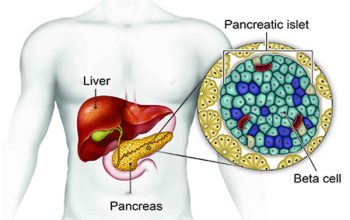Diabetes is a disease that affects our blood sugar levels. Today anyone can get diabetes. Additionally, there is a high chance of you getting the condition if you have a family history of the same. Currently, a considerable number of people have the disease. About 30 million Americans are known to diabetes. The most common occurrence of diabetes is Type 1 diabetes and Type 2 diabetes.
Diabetes, which is also diabetes mellitus, is known to be a metabolic disease that results in high blood sugar. The hormone called insulin takes sugar from the blood to the cells, later utilized for energy purposes or storage. When your blood sugar rises, your body either becomes incapable of making insulin or is not able to use insulin. If diabetes is left unnoticed and controlled, it can lead to severe problems that can affect the kidney, nerves, eyes, and other organs of your body. Some general symptoms of diabetes include increased thirst, increased hunger, frequent urination, weight loss, blurry vision, extreme fatigue, and wounds that do not heal.

Different types of diabetes
- Type 1 diabetes is known as an autoimmune disease. This kind of diabetes is also called juvenile diabetes, which is too severe. This diabetes is most common in kids and teenagers. However, it can occur to a person of any age. In this condition, the immune system destroys and attacks cells in the pancreas, where insulin generally made. There is no particular reason as to what causes this attack. Close to 10% of the population is known to have this kind of diabetes. Additionally, such people have to depend on a daily injected dose of insulin.
- Type 2 diabetes occurs when the body becomes resistant to the insulin produced. This way, sugar starts to build up in your body. People who have this kind of diabetes do not have to depend on insulin, which externally injected.
- The next kind of diabetes is when your blood sugar is usually higher than the average level. However, it isn’t as complicated to diagnose as type 2 diabetes.
- Gestational diabetes occurs when a woman goes through pregnancy. The placenta produces insulin blocking hormones, which are known to cause gestational diabetes. This condition usually goes away once the woman gives birth.
- There is a rare condition that is not in any way related to diabetes but has a very similar name. It is called diabetes insipidus. In this condition, the kidneys remove way too much fluid from your body.
The symptoms of these different kinds of diabetes vary. For example, the symptoms of type 1 diabetes include blurry vision, tiredness, increased thirst, increased hunger, frequent urination, and weight loss. Similarly, the symptoms of type 2 diabetes include wounds that don’t heal, increased urination, increased thirst, increased hunger, and blurry vision. Finally, with gestational diabetes, the symptoms aren’t much conclusive. This condition can be detected only when the woman goes through a routine blood test or an oral glucose tolerance test. This test schedule carried out in the 24th to 28th week of pregnancy.
How can you use exercise to treat diabetes?
Multiple benefits of exercise are great for the body. It can help people stay away from diabetes by managing their weight. Additionally, it helps to improve the blood sugar levels and is also known to improve heart health. Exercise is a must for living as a diet and medicine for a person who is battling diabetes. The American-Diabetes-Association recommends 30 minutes of physical activity every day. An individual who has diabetes must engage in any physical activity that increases their heart rate at least five days per week.
If you are starting, you can start with only walking and walking, considered as an exercise. However, with time, you can also explore other exciting options to workout. You can also switch to having Blood Sugar Formula which is known to have amazing results in normalizing your blood sugar levels. The American Diabetes Association recommends two varied categories of exercises that are known to help with diabetes.
- Aerobic Exercise: This form of exercise practiced using arms and legs in a rhythmic motion, which will increase your heart rate. Some examples that you can try are biking, dancing, swimming, running, and walking. Select an exercise that you enjoy doing. Additionally, set goals that are practical and realistic.
- Strength Training: Strength training is also known as resistance training. This training is known to make you sensitive to insulin and lowers blood sugar levels. With the addition to doing aerobic exercises, you can also practice strength training, which helps with diabetes, performing this at least twice a week. However, make sure you do not practice them two days in a row. Keep a gap of two days between achieving them.
The best time to exercise is generally one to three hours after you eat food. This is the time when your blood sugar is higher. Since many dangers are associated with diabetes, make sure that you wear a medical alert bracelet. This bracelet indicates that you have diabetes and take insulin. Additionally, Aerobic exercises and resistance training help to lower insulin resistance. It is also advisable to mix both these exercises for more significant benefits. A different study found that diabetic people who walked for two hours a week were at a reduced risk of dying of heart attack than those who live a sedentary lifestyle.
Balance exercises and flexibility are essential for people with diabetes. Stretching increases flexibility and motion around the joints. Diabetic people are also more prone to falling, which requires them to practice balance exercises. Balance training will reduce the risk of falling over. Adults who lead a sedentary lifestyle should try to include more physical activities in their day to day life.
Similarly, such people should make sure they avoid sitting for extended periods. Some of the significant benefits that exercise has on your body are that it lowers your blood sugar levels. Additionally, it improves your body’s insulin sensitivity, which means that your body makes better use of the insulin that it produces. However, you must take care that the blood sugar levels should not drop too low as that can also be dangerous.
Consult with a health care provider for advice on the same. Besides, exercise is known to reduce your body fat. It lowers your risk of heart disease. It also helps to build and tone muscles. Regular exercise improves blood circulation and preserves bone mass. Finally, it reduces stress and depression while improving the quality of life.
Read: How Blood Sugar Affects Your Cholesterol Level
Precautions while exercising with diabetes
- Always make sure you consult your health care provider about any new exercise that you plan on doing. Ask them whether it’s safe for you to practice them.
- Exercise is known to lower the blood sugar, while strength training will increase higher blood sugar levels. Ensure to monitor the blood sugar levels after every workout, and keep track of it, helps you in understanding your body responds to specific exercises.
- For individuals who have Type 1 diabetes should test for ketones in their urine right before exercising. Such people should also avoid vigorous physical activity when ketones are high.
- For individuals who take insulin injections, exercise can alter your blood sugar levels. In other words, your blood sugar can drop if the medication is not adjusted correctly.
- If you feel any discomfort while exercising, immediately stop. For instance, if you feel nausea, chest discomfort, rapid heartbeat, dizziness or lightheadedness, sudden weakness, severe pain in the body, shortness of breath, immediately let others know or visit a hospital.
Conclusion
Exercise is often ignored or underestimated when it comes to people who have diabetes; however, as one of the essential, integral parts of daily practices, the schedule and the performance must be adhered to sincerely. Create a workout routine that is enjoyable as well as attainable. First, try out simple exercises and be light. Keep tracking your blood sugar levels before and after every session of physical activity will aid in understanding the best suit of physical activity for your body.


